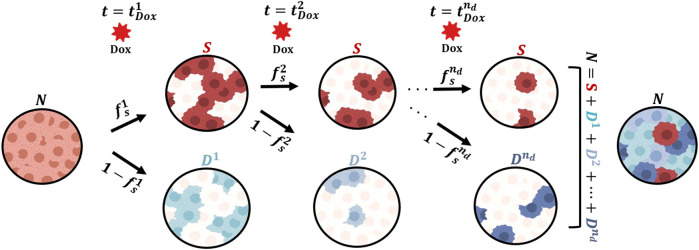FIGURE 1.
Generalized model of tumor cell response to multiple doses of doxorubicin treatment. We start with a population of untreated tumor cells and let them grow for approximately 48 h. At time , we add a dose of doxorubicin (Dox) to each well. We assume that after the treatment, the tumor cells either survive ( ) or are irreversibly damaged ( ) and ultimately die due to the cytotoxic action of doxorubicin. The fraction of cells in either subpopulation is determined by , the fraction of surviving cells after the first dose. After the subsequent doses of doxorubicin ( ), we assume that a fraction of the surviving cells survive the treatment, while a fraction ( ) induces a new subpopulation of irreversibly damaged cells ( , such that the total number of tumor cells is for times . In this study, we further assess whether the collection of can be assumed to take on the same value or whether they require an independent parameterization with each doxorubicin dose. This Figure was created using BioRender.com.

